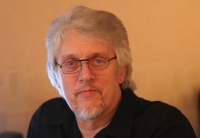...run by private organizers and often located in back rooms of pubs... the clubs were of a strong amateurish nature, with a performance pattern consisting of an opening or warm-up performance by resident or visiting 'floor singers' followed by the featured guest performers...
Hey, wait a minute. Either the folk scene is in a time warp or this passage is describing what many folk clubs are still like in the early 21st century. OK - audience members and artists might be older and greyer but the patterns established by the earnest young followers of the likes of Ewan McColl and Ian Campbell have changed very little. Judging by one or two folk clubs I can think of, neither has the decor in the back room of the pub!
The passage I quoted is from Britta Sweers' book, Electric Folk: The Changing Face of English Traditional Music, published last year and one of the texts that I'm covering in my literature review. The book is actually an account and attempted explanation of the emergence of English folk-rock in the 1960s and 70s. It sets out a 'sociocultural' portrayal of electic folk but also discusses generic issues arising from the fusion of the traditional and the modern.
Going back to folk clubs, Sweers argues that there was a distinct change in the 60s folk club scene. Clubs started out (in the wake of skiffle clubs) as venues for traditional music, singer-songwriters, blues and American folk music. By the mid-60s, British and Irish music were more dominant with much more emphasis on 'authentic' performances of traditional songs.
While the overall trend that Sweers describes here is fairly accurate, I would argue from my own experience that different types of club have emerged to cater for different audience tastes. This may be a sweeping generalisation on my part, but looking at the guest lists of the larger, more 'professional' folk venues, they seem to concentrate on a hybrid of the 'authentic' traditional, presented in an accessible form for modern audiences, using improvisations, complex harmonies, blues-rock guitar riffs and so on. Not sure that Ewan McColl would have approved.
The smaller, back-room-of-pubs clubs and sessions are probably more 'authentic' if you define folk as literally 'music of the people' - even if some of the people sing and play 60s popsongs, Gershwin and Wild Rover.
Filed under:
Britta Sweers folk rock folk clubs authenticity literature review

No comments:
Post a Comment